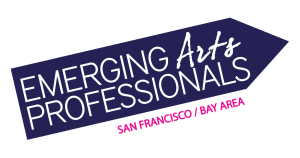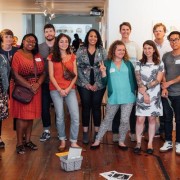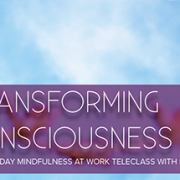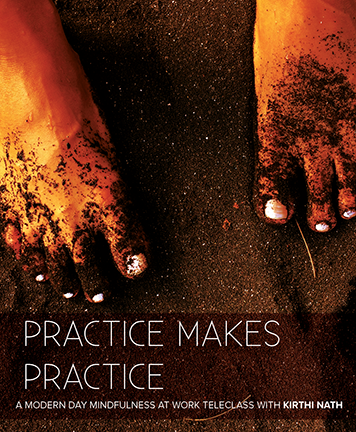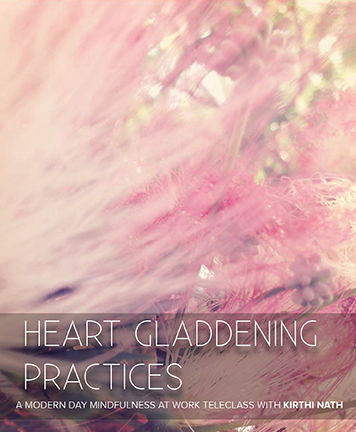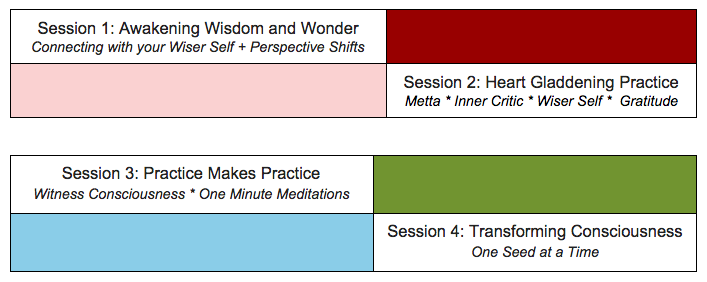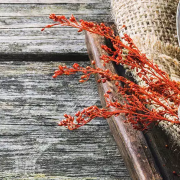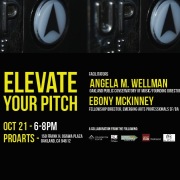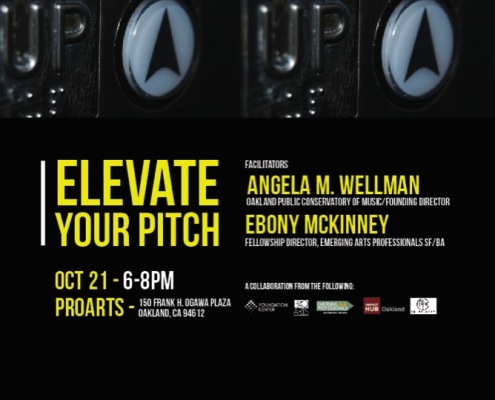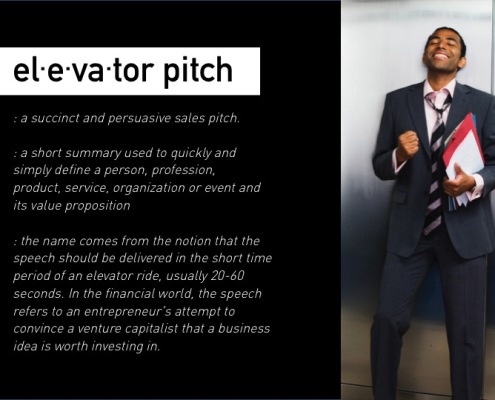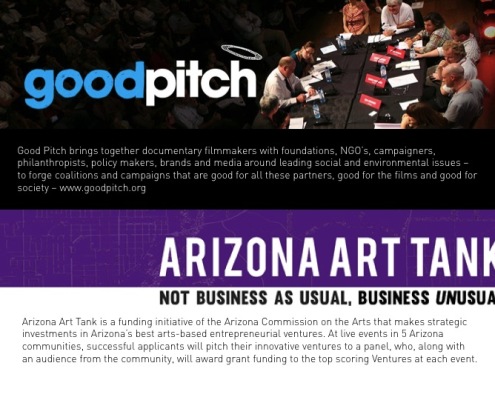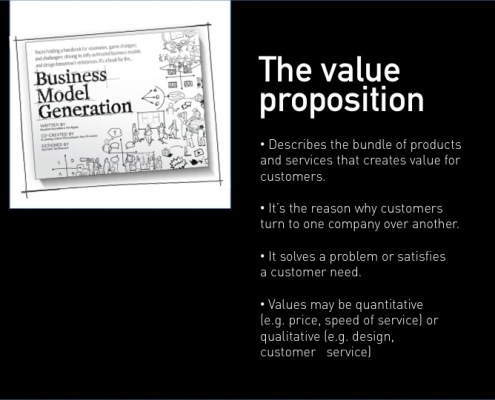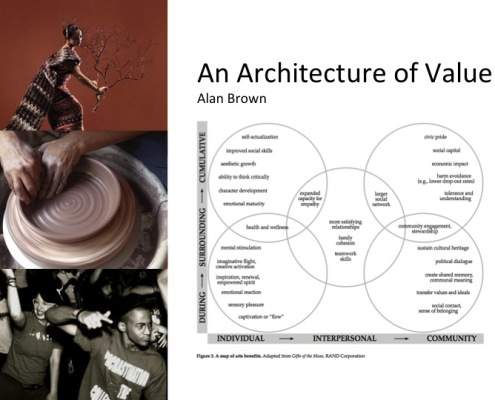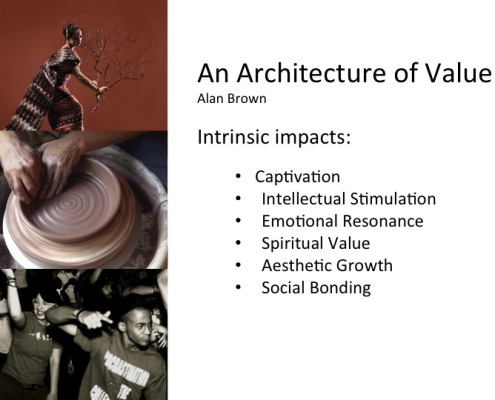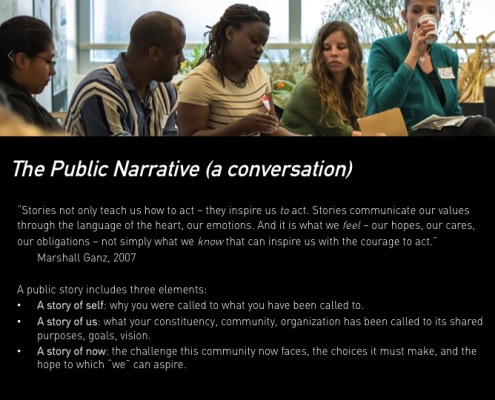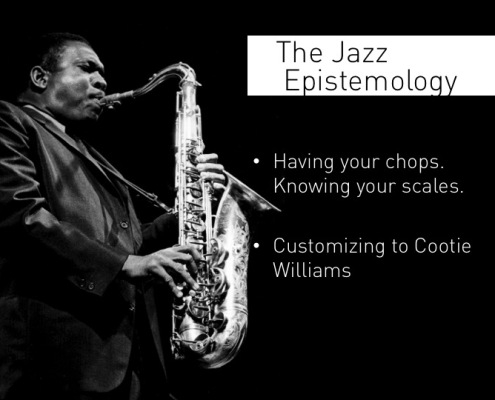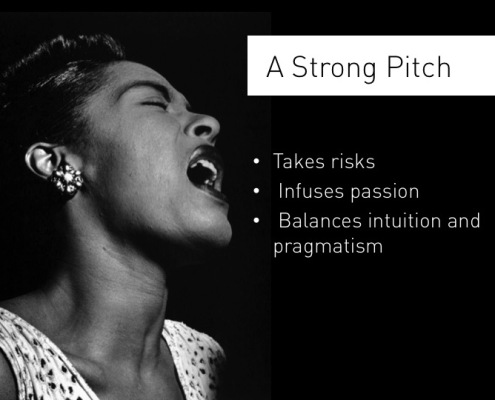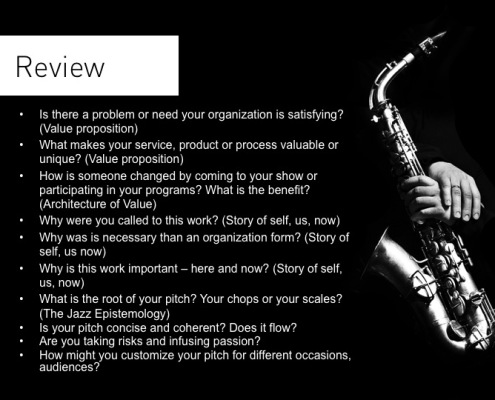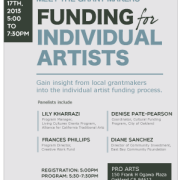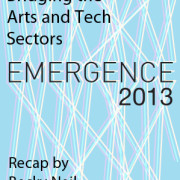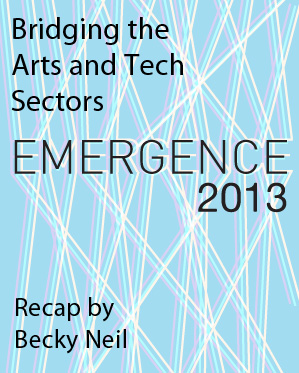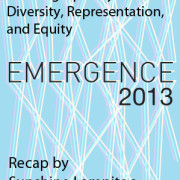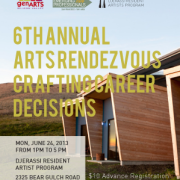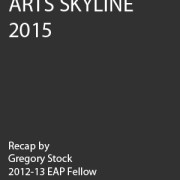Calling Heart-Based Movers and Shakers Behind the Scenes: Modern Day Mindfulness at Work Workshop
/0 Comments/in MADE, Public Programs /by katherincantonThe gift of a calling is that it asks you to listen deeply to awakening, to face your inner critic with humble curiosity and to trust a process that will ultimately allow you and your community to grow in ways you had not imagined possible. Exquisite!
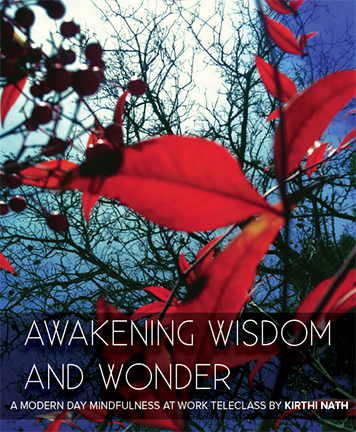 Listen, Love, Leap
Listen, Love, Leap
Modern Day Mindfulness at Work was first offered as a pilot workshop, sponsored in part through a EAP Made grant. It took the form of intimate “virtual tele-class” professional/personal development sessions, workshop style, created and led by me, Kirthi Nath. Modern Day Mindfulness at Work was created for heart-based movers and shakers interested in exploring spiritual mindfulness practices as a foundation for purpose-based livelihood and self-care. Core to the workshops were experiential meditation and creative presencing tools sourced from a variety of traditions — Buddhism, Tantra, Yoga. The workshops also included space for practice, reflection, and sharing. We met every Wednesday from 9-11 am via conference call for four weeks between January 14-February 4, 2015.
Despite my experience as a teacher, vision for the workshop, and background with the topic, I had doubts. Are there other heart-based movers and shakers who are spiritual and curious how these practices can support them professionally and personally? Is it ok to say the word “spiritual”? Would people have enough attention and bandwidth to be present for a workshop mid-week, first thing in the morning? Are the meditations I want to share too wild or too fill in the blank? Sometimes they can veer towards epic sensory spiritual adventures, other times they stay focused in breath, and I wondered how they would be received. Clearly, my inner critic had plenty to say. Instead of trying to push this away, I listened. My wiser self also had a vision — one that wanted to talk candidly about leading from love, intention and values, one that wanted to co-create opportunities to play and invite in magic, one that wanted to sign weekly emails with the salutation ‘love’. Instead of trying to push this away, I listened. To all voices. The dance with inner critic and wiser self: listening, letting go and letting be…LISTEN, LEAP, LOVE.
Creating Quiet in the Morning
Have you ever woken up and felt anxious? Do you check your gadget first thing? Have you noticed how even a simple email causes stress? If we take a breath, we can see and witness how the stress we feel is out of scale with reality. Yet we all feel the stress. I know I have.
We live in a world of digital connectivity and addiction to stress. Yet, we want calm. We want creativity. We want to thrive.
When I first proposed holding my workshop in the morning, I may have been shooting myself in the foot. So many of us wake up with these habits that stress us out. We feel we need to start working first thing. The truth about work is that we’re more productive when we are present.
I recently co-produced a film interview with Annette Richardson, senior advisor at the United Nations for Partnerships. All day she interacts with hundreds of people and makes high-level, life changing decisions. When exploring success and self-care practices, she shared her key to “success”. She has a morning ritual to give herself time to wake up, free of stimulation from outside voices, emails and external distractions. In the morning she takes space for herself, to be quiet, so she can be present and available throughout the day to listen, interact and make decisions that come from a grounded place.
It makes a huge difference to allow time for quiet in the morning, space for ourselves in the morning. For visionaries, this can be hard to do. It’s one thing to be told that this is good thing, that this will help you thrive. It’s another to experience and explore for yourself. I always say: don’t believe me, try it out for yourself. So we held the workshop in the morning, mid-week.
Morning was a good time for me! I did the workshop from home, with my morning tea. Mornings are easier for me. In the afternoon, something else often comes up to knock aside things like this. ~ Jessica
We began every session invoking the magic of rituals. Each call started with a mudra meditation. We combined a mudra (hand held gesture) and a mantra (words repeated during meditation) as a way to quiet the mind and come together as a community. Throughout the course, we explored various meditations and creative presence tools via a mixture of lecture, experiential meditation, reflection, soul inquiry and share.
From this workshop, I’m grateful for and still use the perspective shifts and ask myself often, what I am grateful for. The ‘creative presence tool’ and gratitude practice allows me to take a step back from my work and not become too frazzled with what is going on around me. ~ Dorothy
Practice Makes Practice
I applied for the EAP MADE grant because I appreciated EAP’s focus on regenerative practices and modeling of racially diverse leadership voices. I wanted to share this workshop because I have experienced first hand the gifts of spiritual practice in my work and personal life. I offered this specific wisdom workshop because I was frustrated with the dominance of whiteness in Westernized wisdom teachings and wanted to be part of the expansion of diverse voices. I thought it was important to invite more people of color to be part of the conversation — as leaders, co-creators and also part of the ever growing cultural library of resources referenced and passed on.
When I first met Michelle, my EAP Project Facilitator, she asked me, “How can this experience support you? We trust what you offer will be of benefit for the community, so let me know how we can support you”. I was taken aback, so I was honest. I asked for an extension for the workshop start date so I could go on spiritual retreats.
In October I went on a 7-day silent Metta retreat and in December I went to Hawaii for 7-days and swam, looking into the sky chanting metta phrases every day.
I share this because I almost didn’t.
I wanted to share so much in this course, it’s like a Michelangelo sculpture — you carve away what’s not needed. I almost didn’t include Metta in the workshop because I thought it was either too Buddhist or co-opting Buddhism, but an inner voice whispered, this gladdens your heart, you know the energy of this practice, share it and trust that they will know what to receive and what to let go, and you will pass this on honorably.
Since the workshop ended I’ve been practicing Metta every week ~ Jared
Metta and working with my inner critic and wiser self was exactly what I needed to steer my creative and freelance practice in a direction that was emotionally and intellectually sustainable. ~Dorothy
Oftentimes with callings we feel we’re not ready, that we need more preparation, we need more learning, more, more, more. But callings come to us when we’re ready to listen — and we grow with it. I’ll never forget the first day of our workshop – none of us knew each other yet we knew, we were exactly where we meant to be. Open.
Not an Island
Perhaps you can relate. To be great and valuable, the inner critic chimes in to say that you need to be able to do it all yourself. We all know and talk often about co-creation and collaboration. Are you still hirable if you ask for help? Can you thrive when you practice self-compassion and gratitude? The EAP MADE grant let me explore this. There was a part of the grant for me as visionary and a part for workshop delivery. Like you, I’m multi-talented and could’ve done it all myself. Instead, I listened to my heart which wanted to work with others, to co-create. So I humbled myself and hired Jason Wyman to design the workbooks. We worked very closely as I developed all the assets, and then I let go. What he created was beyond my imagination and just like I dreamed. And I paid him market rate. I mention money because it’s important we break the ceiling that’s real and self-perpetuated, and we honor ourselves and each other by paying each other well.
This was my leap. To allow help. To explore and experience more deeply what it’s like to co-create wonderful in community, and give myself the chance to focus on content creation, delivery and showing up.
Emerging Arts Professional and the MADE grant is rare. It gives grants to projects that are needed but not mainstream. It comes with real people who really care in your successes. If you have an idea or project that’s aligned with a MADE grant, I encourage you to apply. I almost didn’t, and look what blossomed when I took the leap!
The Modern Day Mindfulness at Work helped me cultivate a reflective practice in both my personal and professional lives. At work, it allowed me to take a step back and relax into situations that are often frustrating or anxiety producing. It also added a lovely respite in the middle of my busy week. It was something I looked forward to every week! ~ Jessica
Love, Kirthi
About the Facilitator:
Kirthi Nath is an award-winning filmmaker who believes that ordinary people ripple extraordinary change. Kirthi is the creative director and lead filmmaker at Cinemagical Media, a media production company that focus on creating films and workshops that support individuals, communities and companies to ‘be the cause that creates the effect’. In addition to filmmaking, Kirthi teaches (in person and online) courses and delivers talks that focus on Creative Presence, Spiritually, Mindfulness and the Practice of Good. In 2014 she was a Made Grantee and taught a 4-session online course about Modern Day Mindfulness at Work. Kirthi has practiced meditation, been on numerous silent retreats and immersed into informal and formal Buddhist and Yogi studies since 2001.
Curious how you can order the tele-class or just want to connect? ~ send me a note: kirthifilm(at)gmail(dot)com // www.cinemagicalmedia.com
Modern Day Mindfulness at Work was a workshop series supported by Emerging Arts Professionals’ MADE, a re-granting program that draws on the inspiration and power of the network to propose and execute projects that address immediate solutions of the day. Organizer and facilitator Kirthi Nath offered tools, meditation exercises, and practices in a weekly format. The workshop series aligned with EAP’s focus on regenerative practices, empowering a healthy sector. All of us thank Kirthi for her contribution to the network. Learn more about MADE here: http://www.emergingsf.org/made
What’s for Dinner? Bringing Racial Equity to the Table: Served Up Some Realness
/0 Comments/in Equity, MADE, Public Programs /by esoppraniYou’ve been at that great feast. The one where the food is tasty and the conversation has got good flavor too. You take a bite while listening intently to the fellow across the table. They sip some of wine while you give your two cents on the state of affairs. Well we had a bit of that going on at What’s for Dinner? Bringing Racial Equity to the Table for Emerging Arts Administrators, an EAP MADE project awardee. On October 18th artists and staff from several Bay Area organizations came together to talk about what structural racism looks like in their field, at work, and in their lives, and what to do about it. It was a juicy conversation indeed.
The structure and organization of the day helped to digest a rich amount of information and dialogue. [workshop participant]
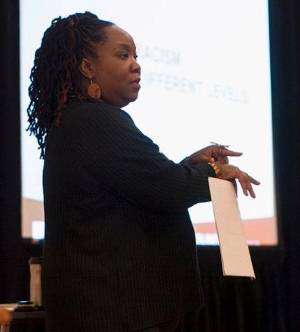 We began by establishing some clarity around language. What is white privilege? Internalized oppression? Institutional and structural racism? Are diversity, inclusion, and equity the same? Why does it matter? Popular narratives around success and failure in the United States are so divorced from a structural analysis that it inevitably serves to reinforce racism, and even other forms of oppression. And yes, we also talked about the role that art plays (intentionally or not) in that process, and how that process influences the making of art. And finally, we explored what that means for artists and arts organizations to be a major source of that narrative, of storytelling in our society.
We began by establishing some clarity around language. What is white privilege? Internalized oppression? Institutional and structural racism? Are diversity, inclusion, and equity the same? Why does it matter? Popular narratives around success and failure in the United States are so divorced from a structural analysis that it inevitably serves to reinforce racism, and even other forms of oppression. And yes, we also talked about the role that art plays (intentionally or not) in that process, and how that process influences the making of art. And finally, we explored what that means for artists and arts organizations to be a major source of that narrative, of storytelling in our society.
We need a space to practice our own story telling. [workshop participant]
One of the earliest ways that we try to make sense of the world is to try to understand the stories that are told to us. As a result, we have millions of conditioned responses swimming around in our head. This is good, and that bad. Watch out for this one. Embrace that. Hold this one at an arm’s distance. We are constantly juggling them, trying to keep them in check. What do we do with all of those stories? What do they do to us? From here we investigated the influence of implicit bias and resolved that there is interconnectivity among the art, society and the artists. Storytelling for the artist is deeply personal, and the response to that art is both personal (including privilege, bias, etc.) and structural (swimming in the context of history, culture, etc.) The mere existence of our art is not just a comment on the art itself, but also the structure in which it exists.
This training was very informative and provided some great tools on how to approach racial equity professionally and in my everyday life. It was great to be in a room of arts professionals looking for the same answers, especially when discussing intersectionality. [workshop participant]
So we dug deeper and unpacked our various identities in the context of privilege and marginalization. We even asked the scary question, “How does identity exist within your organization or the arts community?” Then we went even further and explored how we could leverage our areas of privilege for the greater good by making very direct, conscious choices around issues of race.
And we did it all while making some amazing Play Doh art! So yes. You missed a great dinner conversation. So don’t miss out the next time we decide to serve up some realness around race and the arts.
– Tammy Johnson
A word from Organizers Cristal Fiel and Tyese Wortham
In our ten years of experience as arts administrators, we have come across the issue of racial equity time and again. However, we didn’t know how to speak about racial equity and the arts so that colleagues and leadership would be able to listen and hear us until going through Tammy Johnson’s Step-Together-Step curriculum.
In response to our desire to push the conversation of cultural equity forward, we applied for Emerging Arts Professionals’ (EAP) MADE program and were awarded the opportunity to bring in art and racial equity trainer Tammy Johnson to the EAP network. Our goal for “What’s for Dinner: Bringing Racial Equity to the Table for Emerging Arts Professionals” was to provide a safe space for emerging arts administrators, artists, and allies to learn how to tackle issues around cultural equity that might arise in workshop participants’ respective cultural institutions.
As arts administrators of color, it is important to us that we approach our work with a lens of cultural equity. Our previous trainings with Tammy’s Step-Together-Step curriculum have informed us with a language around race and racism and have empowered us to feel more comfortable with talking about the “elephant in the room.”
We all come from different places, but we hope that the Emerging Arts Professional’s continued dedication to this issue would allow the network to find common ground to advance a culture that calls for a more equitable society.
– Cristal and Tyese
About the facilitator:
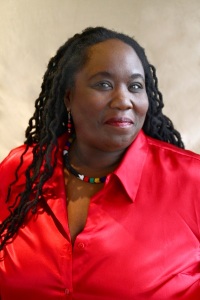 Tammy Johnson is a dancer, writer, and equity consultant. After directing electoral campaigns in Milwaukee, Johnson spent a decade advancing racial equity as a trainer, writer, and public speaker at Race Forward. Having gained recognition for her knowledge of equitable public policy practices at Race Forward, she co-produced Race and Economic Recovery with LinKtv and Race Forward’s Wordvideo blog series. Johnson is co-director of the award winning bellydance duo Raks Africa. Tammy lives in Oakland,California and can be reached at tmjabundance.com
Tammy Johnson is a dancer, writer, and equity consultant. After directing electoral campaigns in Milwaukee, Johnson spent a decade advancing racial equity as a trainer, writer, and public speaker at Race Forward. Having gained recognition for her knowledge of equitable public policy practices at Race Forward, she co-produced Race and Economic Recovery with LinKtv and Race Forward’s Wordvideo blog series. Johnson is co-director of the award winning bellydance duo Raks Africa. Tammy lives in Oakland,California and can be reached at tmjabundance.com
About the organizers:
Cristal Fiel holds a bachelor degree in Sociology and Ethnic Studies from the University of California, Berkeley. As Editor in Chief of the literary and arts organization, Maganda Magazine, she discovered her calling to work in the arts field. She has served as administrative coordinator and board member of the Asian American Women Artists Association, and has volunteered with a number of Bay Area organizations, including the San Francisco Film Society. Fiel is currently a program associate at the San Francisco Arts Commission.
Tyese Wortham is a grantmaker and administrator in the arts, teaching artist, and dancer with a commitment to advancing cultural equity in San Francisco Bay Area’s arts landscape by serving under-represented and under-resourced communities. She has been recognized for her expertise in cultural arts as a panelist, consultant, facilitator, and committee member for various Bay Area arts organizations, including the Isadora Duncan Dance Awards. Tyese served as a fellow in the first cohort of the EAP Fellowship Program.
What’s for Dinner?” was a workshop supported by Emerging Arts Professionals’ MADE, a re-granting program at draws on the inspiration and power of the network to propose and execute projects that address immediate solutions of the day. Cultural Equity is one of the four primary Areas of Study for EAP, and we are deeply thankful to Tammy Johnson, Tyese Wortham, and Cristal Fiel for providing this workshop to all of us. Learn more about MADE here: http://www.emergingsf.
Elevate Your Pitch – Event Recap
/0 Comments/in Public Programs /by esoppraniCreatives gathered at Pro Arts on Tuesday Oct 21st for the Elevate Your Pitch Workshop. The goal of the workshop was for participants to practice and improve upon their pitches, whether that meant a solo artist applying for gallery representation or a theater start-up organization pitching to investors.
Participants included, independent visual artists, performers, Theater Interns, and others working in the arts; as they entered the gallery they were introduced to the evening with a visual name game. Everyone was asked to illustrate the meaning/story of their name and to present that story to the group. The ulterior motive to this name game, later disclosed by the facilitators, was to get us all engaged in telling a brief story, one that we knew off the tops of our heads and felt deep passion or connection to.
This exercise led to a brief presentation on broader ways to look at our own pitches. Workshop co-facilitator Ebony McKinney, Independent Consultant and Fellowship Director of Emerging Arts Professionals of the SF Bay Area, touched on the nuanced differences between the business/venture capital and cultural/art uses of The Pitch. Particularly she referenced Alan Brown’s “Architecture of Value” diagram as a compelling resource that dissect the levels of impact arts and cultural workers have on those around them. Ebony also introduced the ideas of Marshall Ganz, as a framework for pitches that tell the Story of Self, the Story of Us and the Story of Now and challenged participants to make these stories a part of a public narrative by allowing The Pitch to be more than conversation starter.
Co-facilitator Angela M. Wellman, Founding Director of the Oakland Public Conservatory, told her own personal success story which included always “having your chops” together. As a jazz musician, she practiced scales on her own until the moment came for her to step in and play – being prepared to impress, she says, is one of the best things artists can do for themselves. In a casual yet genuine way, all attendees were able to discuss their individual pitches with the leaders and each other, helping develop delivery style and even the ideas themselves.
Bios
Angela M. Wellman, Oakland Public Conservatory of Music/Founding Director – Trombonist Angela Wellman, hailing proudly from Kansas City, Missouri, has performed with the McCoy Tyner Big Band, Joe Williams, Al Grey, Slide Hampton and other noted musicians. Raised in Kansas City, Missouri, Ms. Wellman was nurtured in a musical family, and is a third generation jazz musician and music educator. She grew up listening to the stride piano style of her grandfather, her father’s swinging ballad & blues piano, and the soul-stirring songstylings of her mother, Jyene Baker. Angela inherits her passion and understanding for the preservation of musical traditions through education from her uncle and mentor, Eddie B. Baker, Sr., founder of the Charlie Parker Memorial Foundation & Academy for Performing Arts and the International Jazz Hall of Fame. Angela’s initiation into the world of Jazz as a player began while hanging out at sessions at the famed chitlin’ circuit Local 626, the once–Black musicians’ union in Kansas City, and now sanctuary for the spirits of jazz pioneers such as Ernie Williams (The Last of the Blue Devils), Count Basie, Charlie Parker, and countless others who got their start in that very place.
In 2005 she founded the Oakland Public Conservatory of Music to provide high quality, affordable music education for Oakland citizens. Angela divides her time between Oakland and Madison, WI where she is pursuing doctoral studies in Education/Curriculum and Instruction at the University of Wisconsin. She also performs and teaches throughout the United States. Her band, New Roots, performs spirited, contemporary music, creating new forms, styles, and roots in the Jazz tradition.
Ebony McKinney, EAP Fellowship Director, Independent Consultant – Ebony has a diverse range of experience in non-profit, philanthropic and government organizations. McKinney served as the founding director of Emerging Arts Professionals/SFBA, a network focused on empowerment, leadership, and growth of next generation arts and culture workers in the San Francisco Bay Area and was instrumental in helping to establish the statewide California NextGen Arts Leadership Initiative funded by The James Irvine Foundation and The William and Flora Hewlett Foundation. She has held positions with Intersection for the Arts, the San Francisco Arts Commission and the Kely-Strayhorn Theater in Pittsburgh, Pennsylvania. McKinney has participated in grant review panels for the National Endowment for the Arts and the Oakland Cultural Affairs Commission and currently serves on the on the Citizen’s Advisory Committee of Grants for the Arts/San Francisco Hotel Tax Fund. Ebony holds a BA in Communications from Chatham College and MA’s in both Cultural Entrepreneurship and Visual Anthropology from Goldsmiths, University of London.
Co-Facilitated by: Angela M. Wellman, Oakland Public Conservatory of Music/Founding Director and Ebony McKinney, Independent Consultant & Fellowship Director, Emerging Arts Professionals SF/BA
Event Sponsors & Organizers:
Divya Balakrishnan, Administrative Gallery Coordinator, Pro Arts,
AJ Kiyoizumi, Curatorial Intern, Pro Arts,
Sarah Jo Neubauer, Capacity and Leadership Development Manager, Foundation Center-San Francisco
Ashara Ekundayo, Chief Creative Officer &OMI Gallery Director, Impact Hub Oakland
Katherin Canton, Network Coordinator, Emerging Arts Professionals/SFBA
Meet the Grantmakers – Funding for Individual Artists
/0 Comments/in Open Systems, Public Programs /by Admin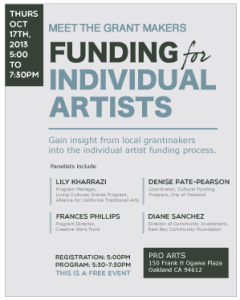 Thursday, October 17TH, 2013
Thursday, October 17TH, 2013
5:00pm to 7:30pm
ProArts Gallery
150 Frank H Ogawa Plaza Oakland CA 94612
Gain insight from local grantmakers into the individual artist funding process.
Join us for this unique program featuring local Bay Area arts funders as they describe their organization’s funding priorities and guidelines, discuss regional arts and culture funding trends, and offer practical tips on how to apply.
Speakers include:
- Lily Kharrazi, Program Manager, Living Cultures Grants Program, Alliance for California Traditional Arts
- Denise Pate-Pearson, Coordinator, Cultural Funding Program, City of Oakland
- Frances Phillips, Program Director, Creative Work Fund
- Diane Sanchez, Director of Community Investment, East Bay Community Foundation
Doors open/Registration: 5:00pm
Program: 5:30-7:30pm
Meet the Grantmakers is a event hosted by Foundation Center San Francisco, Pro Arts, and Emerging Arts Professionals – SFBA
Space is limited – RSVP today
Want to let your co-workers know about it? Download the announcement and post it!
For updates or to reach out to the event staff pleas follow the event’s Facebook Page.
Bridging the Arts and Tech Sectors
/0 Comments/in EMERGENCE 2013, Networked Approaches, Public Programs /by AdminAfter a rousing and candid keynote panel on defining open systems, participants in the Emergence 2013 Networked Approaches track moved downstairs at SPUR for our first breakout session. Moderated by Maura Lafferty, independent PR consultant, this session’s topics focused on practical suggestions to improve collaboration between the arts and technology sectors. Maura gathered a balanced panel featuring Brianna Haag, marketing manager at Eventbrite; Emma Leggat, head of corporate social responsibility at StubHub; and Allison Murdock, organizer of Silicon Valley Rocks and VP of Marketing at GigaOM.
Maura began the conversation by asking the panelists to share how their organizations are currently involved in the arts, and it was both heartening and revealing to see how each company used the passions and interests of their employees to direct their efforts in the arts.
Emma shared how StubHub began their Rising Stars philanthropic program by identifying ways their employees and company assets were particularly well-suited to make a difference. Because StubHub is an event ticket resale platform, they discovered that music, youth development, and local organizations resonated particularly well with their employees.
As Emma put it, “Our employees are fans themselves!”Roots of Music, a New Orleans teen music program, was the perfect match to align with these interests, and received one of the initial Rising Stars grants in addition to leveraging the StubHub platform for their event ticketing.
The theme of shared values emerged as a key point of discussion as the conversation continued.
What values are shared between technology organizations and arts organizations? How can these shared values be leveraged to the mutual benefit of partner organizations?
Brianna urged arts administrators to think beyond funding when approaching a technology company, and consider the full spectrum of ways to partner and support mutual goals. She suggested in-kind sponsorship — such as free use of the company’s software — volunteer days, and workshops.
Allison agreed, saying, “You need to create opportunities to engage. Writing a check is nice, but create an opportunity to do something; an afternoon of engagement can lead to money later.”
Emma built on this, describing a holistic approach to working with tech companies: “Think of it as a funnel: a well-constructed program leads to volunteers leads to money.”
So put your brainstorm caps on, fellow arts managers, because these tech companies really want to hear innovative ways that they can build a lasting partnership with you!
If you are an arts organization looking to secure funding, sponsorship, or other support from a technology company, you may want to think about the following as you build your program:
-
Business strategy, marketing, and other expertise: Do you have an organizational challenge that the technology company’s employees may have the expertise to help with? Allison recommended that you think about ways they can advise you on improving processes, strategies, and plans.
-
Software, real estate, and other physical or digital assets: Does the technology company have a great location? Maybe you can use their grounds or conference room for a donor event. Do they have access to a wide channel of advertising? Maybe they can donate space for a week to your cause, like Emma did at StubHub for Roots of Music.
-
Opportunities to teach and learn: This goes both ways! In addition to sharing knowledge on specific computer tools, technology employees might want to learn to paint, dance, sing, or whatever skills and talents your organization offers. Brianna shared how excited her employees got when they were able to interact during a workshop with artists: they talked about it for months afterwards!
Of course, these relationships need to start somewhere.
Maura asked panelists, “What suggestions do you have for starting the conversation and initial outreach?” Here, it became clear through their anecdotes that startups look their employees for leadership.
Brianna explained how Eventbrite created an employee-led impact team that makes philanthropic decisions for the company on a quarterly basis. “So,” she said, “identify the people who are passionate [about your mission]. They will be your advocates from within the organization.”
To get past the email filter and initial blockade, “do your homework!” Allison urges. “You really have to research. Find those people and reach out to them directly.” Once you have an advocate on the inside, the word will get back around to the decision makers that this cause is important to their employees.
In all there is tremendous potential for cross-industry collaboration between technology and the arts. With this insider’s scoop in mind, arts professionals should be able to identify natural ways to align both organization’s missions and approach the right people to make those programs happen. I, for one, was pondering for days after of ways that I can get a tech expert to help me with my art project!
About Becky Neil
Becky Neil is a project lead at Bottlecap Gazebo, where she builds community through big art.
Defining Open Systems: Diversity, Representation, and Equity
/in EMERGENCE 2013, Open Systems, Public Programs /by AdminAs part of Emergence, Emerging Arts Professional’s daylong annual convening on June 3, 2013, a panel discussed what it means for a system to be open and healthy.
Defining Diversity and Open Systems
Defining and creating open systems involves many components but, for some reason, “diversity” has become the catch-all term for discussions about changing population demographics, inclusion, equity, and representation.
However, Lynn Johnson, co-founder and CEO of Glitter & Razz Productions points out that “diversity can’t be the only component, and it can’t be the lead component.” Each of these aspects requires unpacking on their own, both on individual and systemic levels, before any type of movement or change can be planned or enacted.
Defining these potentially loaded terms and concepts is the first process dancer and organizational equity consultant Tammy Johnson goes through with organizations.
“Let’s get clarity,” she states. What is the definition of diversity? Inclusion? Equity? What does all this stuff mean when the rubber hits the road?” To enact systemic change, it is immensely important for everyone to be starting on the same page and speaking the same language.
Parsing the diversity of thought that exists within diversity conversations is the first step in addressing how a truly open system can be created.
6th Annual Arts Rendezvous Crafting Career Decisions
/0 Comments/in Public Program: Mixers, Public Programs /by Admin 6th Annual Arts Rendezvous
6th Annual Arts Rendezvous
Crafting Career Decisions
$10 advance registration – $15 at the door
get your tickets here.
Emerging Arts Professionals, genARTS Silicon Valley, and Djerassi Resident Artists Program invite you to join us for an afternoon getaway and fishbowl discussion about crafting career decisions.
Crafting a career in the arts is rife with decisive moments. How do we approach them? Who do we turn to for advice? Join Bay Area arts professionals, administrators, and artists at all stages to discuss the decisions we make affecting our careers.
Schedule:
1 – 3 pm
Hike in small groups through Djerassi’s stunning landscape to see a handful of the almost 40 on-site sculpture installations by past artists-in-residence and use the time to think and share about your career experiences, pivotal moments and transitions. Bring layers and shoes suitable for hiking on steep dirt trails.
2:30 – 5 pm
Replenish with delectable snacks prepared by Djerassi’s Chef, Dan Tosh.
3 – 4:30 pm
Reconvene in the Artists’ Barn for the fishbowl discussion.
We have invited some arts professionals to get the conversation started, but we need you to jump into the fishbowl to keep it going. Come with thoughts in mind or discuss on the fly. Walk away with new inspiration and contact information for that awesome person whose brain you have been dying to pick.
Need a ride or willing to drive? Carpooling is highly recommended. Join the event and post a message here to connect with people in your area who need a lift or are able to provide one.
Bay Area Arts Skyline 2015 Event Recap
/0 Comments/in Networked Approaches, Public Program: Mixers, Public Programs /by Admin What will the Bay Area arts skyline look like in 2015? The cultural landscape is constantly evolving in the Bay Area. New openings, closings, and innovations are inevitable in a metropolitan area. On March 27, EAP hosted a panel of leaders in the arts fields at the Center for New Music to discuss the challenges facing local arts institutions, small and large.
What will the Bay Area arts skyline look like in 2015? The cultural landscape is constantly evolving in the Bay Area. New openings, closings, and innovations are inevitable in a metropolitan area. On March 27, EAP hosted a panel of leaders in the arts fields at the Center for New Music to discuss the challenges facing local arts institutions, small and large.
The panel featured Barrett Shaver, director of development, SF JAZZ; Christopher Borg, executive director, Community Music Center; Gina Basso, public programs, San Francisco Museum of Modern Art; and Jack Carpenter, production director, SF Ethnic Dance Festival.
Though looking towards the future was ultimately on everyone’s minds, the conversation stayed within the current context. Themes of the conversation revolved around staffing, capital campaigns, space, and project-based venues versus an actual building. We wanted to share some kernels of the experience with our larger network. Also, we love to continue the conversation beyond the brick and mortar, so feel free to add your comments.
Adam Fong, executive director of both Emerging Arts Professionals / SFBA and the Center for New Music, took the brave task of navigating the arts skyline with consistency and curiosity.
Some highlights of the current Bay Area Arts Skyline
The Exploratorium closed in Fall 2012 at the Palace of Fine Arts and will re-open on April 17 at Pier 15 with a new building.
The SFMOMA will be closing its doors for three years on June 2 to make way for construction of a 235,000 square foot addition. Until early 2016, the SFMOMA will present new art experiences around the Bay Area as the building is transformed.
SF JAZZ recently opened a brand new facility on the corner of Franklin and Fell streets to wide acclaim, moving from project-based to a cultural institution.
The Community Music Center will be expanding with the purchase of a neighboring house. Christopher Borg says it will make CMC more of a “campus.” CMC has been in the same building in the Mission district since 1921.
World Arts West, the organization hosting the San Francisco Ethnic Dance Festival, continues to have the conversation about finding a permanent home, believing they need to make the move to a more established organization within the city.
There is a light that never goes out
Overall, the tone is continuing to strive to be experimental with space, programming, and money. As we continue to move through the economic recession towards recovery, new spaces can mean new opportunity and hopefully engaging new audiences with a stronger brand than project-based models. Though institutions grow and consolidate, seeking new ways to engage audiences is at the heart of the conversation. And as Ms. Basso said, the SFMOMA is screwing little light bulbs across the city throughout 2016. But, don’t worry the lights won’t go out!
About Gregory Stock
Gregory coordinates public programs at the Fine Arts Museums of San Francisco along with a team of four under the direction of Renee Baldocchi. At the de Young, he provides support and logistics of Friday Nights at the de Young, a weekly “art happening” public and free event for all ages themed to the permanent collection and special exhibitions. At the Legion of Honor, he coordinates the Chamber Music Series and special exhibition programming. Other programs include special lectures and academic symposiums for special exhibitions. Interests cross between public art, digital tools, collaboration and social enterprise. He has been in the Bay Area for four years and graduated from Saint Louis University with a BA in American studies and history.
Re-imagining the Box on May 13 at SOMArts
/0 Comments/in Open Systems, Public Programs, Regenerative Practices /by Admin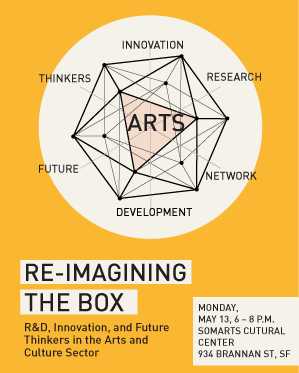 Emerging Arts Professionals / San Francisco Bay Area invites you to an evening of open forum discussion to assess where and how R&D fits into arts and cultural innovation.
Emerging Arts Professionals / San Francisco Bay Area invites you to an evening of open forum discussion to assess where and how R&D fits into arts and cultural innovation.
Join us on May 13 at SOMArts. Register today!
When other sectors are experiencing growth at exponential rates, how can we as arts leaders re-prioritize and re-imagine the R&D process to create impactful and innovative works in our communities? Does R&D necessary lead to innovation–and what does innovation in the arts field even look like at this point?
We’re conducting a little R&D about R&D, with plans to create a real resource for those in the field who are interested in the now, new, and next.
Who are the future thinkers in the field? How can we make forward thinking in the arts a higher priority in cycles of support?
We’ve invited some future thinkers of our own to get the conversation started, but we need you to bring you own ideas (#BYOID) to make it count!
Speakers include
Mat Dryhurst, Artup and GAFTA
Jess Curtis, Director/Choreographer/
Jayna Swartzman, Bay Area, Center for Cultural Innovation
Julie Potter, YBCA
Our ultimate goal with this forum is to create a resource informed from your ideas. It will offer a space to share and learn about ways our peers continue to push the field into new directions–but to get things started, we need you!
Re-imagining the Box is supported by the SOMArts Cultural Center’s Affordable Space Program, which provides subsidized, large-scale affordable space and technical assistance to nonprofits.
SOMArts receives support from the San Francisco Arts Commission’s Community Arts and Education Program with funding from Grants for the Arts/The Hotel Tax Fund.
The mission of SOMArts is to promote and nurture art on the community level and foster an appreciation of and respect for all cultures. To find out about SOMArts classes, events and exhibitions, please visit www.somarts.org.
EAP SF/BA Mission
OFFICE HOURS
SAT & SUN: Closed
p. (415) 209-5872
